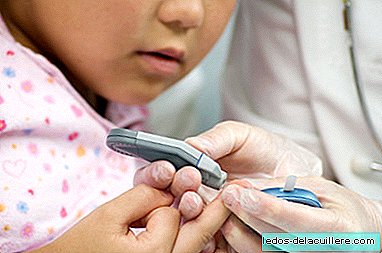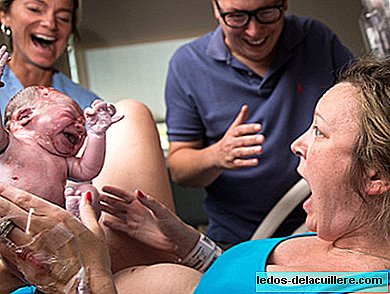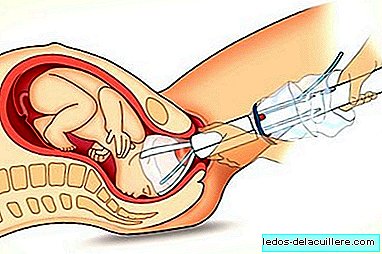
Celia Gómez Jiménez is a student of Telecommunications Technology Engineering at the University of Navarra and has just designed a system that can save diabetic children the prick when measuring blood glucose.
It is a smart bracelet, capable of detecting both the rise and fall of sugar in a matter of seconds and non-invasively. The device, which is still under development, it is expected to begin marketing within two years.
A bracelet that will improve the quality of life of diabetic children
Celia's sister was diagnosed with type 1 diabetes when she was 10 years old, and during the month she was admitted to the hospital, Celia and her other brother Eduardo, recently graduated in Medicine from the University of the Basque Country, began to investigate more about the illness.
It was then that they realized that there were not many alternatives for measure non-invasively and continuously blood glucose levels, so Celia decided to use her knowledge of microwaves to design a system that would improve the quality of life of diabetic patients, especially children.
And that is how the "Be Easy" project emerged, in which Eduardo and two researchers from the Public University of Navarra also work: Israel Arnedo Gil, professor of the Department of Electrical and Electronic Engineering, and Jon Mikel Percal Ciriza, PhD student .
It is a smart bracelet that connects to a sensor via Bluetooth LE technology (low consumption). The sensor is placed in the ear and works like a radar, detecting abnormalities of blood glucose and making measurements continuously that are reflected on the wristband.
In this way, the patient can check the measurements quickly and non-invasively, and be notified by an alert system when any alteration is detected.
There is also the possibility to configure the bracelet so that the child's parents or guardians receive an SMS or a message through application with the registered alerts, so that the distance is not an impediment so that they can be informed of any problem that your child could have.
The system detects both hypoglycemia, which can lead to irreversible dizziness, such as hyperglycemia, which, although not causing symptoms, can also have very serious consequences for the patient.
Celia hopes that this smart bracelet improve the quality of life of diabetic children, saving them the prick for the glucose measurement and warning early in case of alterations in blood levels. However, both the sensor and the bracelet will be adjustable so that adults who want it can also use it.
At the moment it is in the development phase but its creators hope that it can begin to be marketed within two years.
This project has won the first prize of the InÍciate 2017 awards (valued at 10,000 euros) convened by the Government of Navarra through the public company European Center for Business and Innovation of Navarra (CEIN).

Over time all kinds of applications, projects and information portals have been developed for help diabetic patients in their daily lives, and improve your quality of life.
It has also been seen that after a specific training dogs are able to detect sudden drops in blood glucose with their smell, so there are already hospitals that work with these animals as an important support for patients.
Diabetes affects 143 million people worldwide, including young children, so it is essential to continue developing aid, initiatives or inventions that improve their quality of life.Diabetes in childhood
It is estimated that in Spain there are 29,000 children under 15 years with diabetes mellitus, which increase in 1,100 new cases every year.
According to data published by the Diabetes Foundation, el 95% of children and adolescents in our country who have diabetes are type 1, although recently there has been an increase in the number of cases of type 2 diabetes.
Diabetes occurs when the pancreas does not produce enough insulin to regulate blood sugar levels. The causes that cause this disease are unknown, but it seems to be a mixture of genetic, autoimmune and environmental factors.
Early diagnosis is essential for find the most appropriate treatment and avoid complications, so it is important to recognize the symptoms, which are often confusing and go unnoticed for quite some time.
Not surprisingly, according to a study conducted by the Spanish Society of Pediatric Endocrinology (SEEP), half of children under 5 years and almost 70 percent of children under two years diagnosed with diabetes they already had ketoacidosis, which is a serious complication derived from the prolonged lack of insulin in the body.

The symptoms that can put us on alert are:
The child urinates frequently and there may even be cases of children who begin to wet the bed on a recurring basis when they had stopped
When losing fluid through the urine, the child experiences constant thirst
Excessive hunger
Unexplained weight loss
Fatigue
Irritability
Blurry vision
Nausea or vomiting
Abdominal pain
Bad breath
The global increase in obesity and physical inactivity in childhood are playing an important role in the development of diabetes. Therefore, eating healthy and adopting healthy lifestyle habits could be a strong defense against this disease.
IStock Photos
Via Medical Writing
In Infants and More Childhood Diabetes












